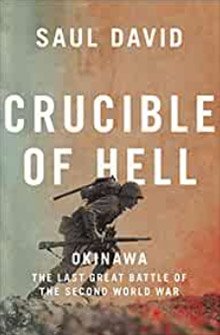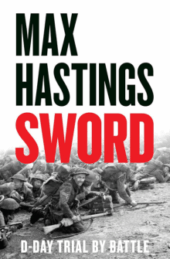Harry S. Truman’s decision to drop the bomb on Japan is inevitably controversial. The events of 6th August 1945, as ‘Little Boy’ was unleashed on Hiroshima, are brilliantly and tragically described by Saul David in Crucible of Hell. It is unpleasant to read of the civilians who experienced the attack, with wounds of indescribable pain and mass death all around. The aircrew that delivered the payload had mixed views, one thinking, ‘Thank God the war is over’ and another, ‘My God, what have we done?’. Add to this the Nagasaki attack three days later, and the Americans had inflicted at least 200,000 deaths on Japan. Robert Oppenheimer, father of the atomic bomb, believed he had blood on his hands and rather unwisely said as much to Truman in a meeting at the Oval Office in October of that year.
Oppenheimer was unaware, in contrast to Truman, of the sheer horrors experienced by American servicemen in their fight to capture Okinawa, the final battle before the planned invasion of Japan. Beginning in late March 1945 and lasting nearly three months, the operation was commanded by the limited Lt. Gen. Buckner. Crucible of Hell is a distressing read at times, but always compelling and illuminating too as the ghastly experience of soldiers and civilians is brought to life in a vivid account. The US assault saw heroic acts of bravery in the face of a resolute and utterly committed enemy. But this revealed the problem behind the strategy which, with head-on attacks meeting well entrenched opposition, resulted in 12,500 American dead and 76,000 casualties in total.
David’s story is not limited to the military experiences, though. He has uncovered numerous accounts from those participants not usually given a voice in military history: Okinawan civilians, whose culture was increasingly subsumed by Japan, suffered by far the most losses of 125,000; Japanese nurses, tending to their patients, and providing sensitive care that we’ve grown used to reading from allied sources; and relatives of kamikaze pilots tenderly speaking of their loved ones prior to the horrific suicides.
By the 18th June it was clear to the Japanese that all was lost and further fighting hopeless. Their commander, General Ushijima, refused to entertain surrender and urged his troops to fight to the bitter end. When his final order was issued, an extra note was added, ‘Do not suffer the shame of being taken prisoner. You will live to eternity.’ Resistance continued until the 30th June.
The battle of Okinawa, along with Iwo Jima, led to the realisation by the US High Command, and ultimately President Truman, that any invasion of Japan would mean vast numbers of US troops losing their lives. David makes clear that it was this conclusion, unanimous among the leadership at the time, which caused Hiroshima and Nagasaki. Crucible of Hell goes a long way to putting the reader in the minds of the Americans, both combatants and leadership, in those fateful days at the end of World War Two. As a furious Truman said after his meeting with Oppenheimer, ‘Blood on his hands? Damn it! He hasn’t half as much blood on his hands as I have.’
Oliver Webb-Carter is the Editor of Aspects of History.







